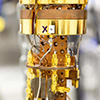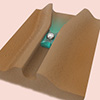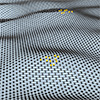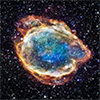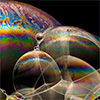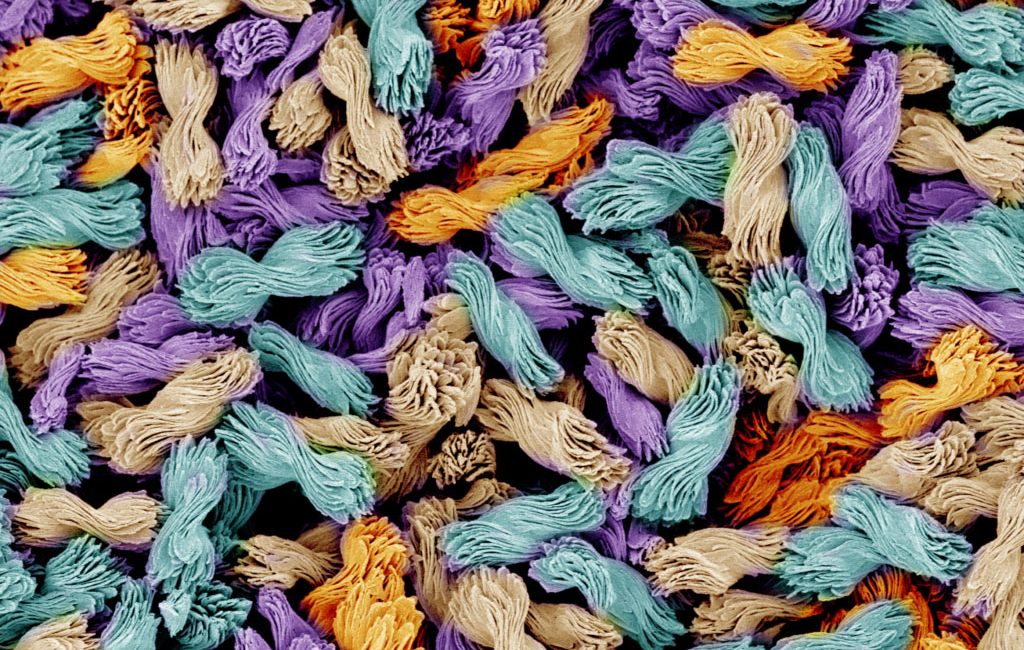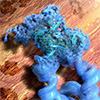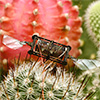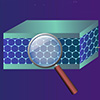Mar 16, 2023 (Nanowerk News) Researchers have shown how energy disappears in quantum turbulence, paving the way for a better understanding of turbulence in scales ranging from the microscopic to the planetary. Dr Samuli Autti from Lancaster University is one of the authors of a new study of quantum wave...
A novel approach to harvesting aerial humidity with organic crystals
Mar 16, 2023 (Nanowerk News) Researchers of the Smart Materials Lab (SML) and the Center for Smart Engineering Materials (CSEM) at NYU Abu Dhabi (NYUAD) have reported a novel method of harvesting water from naturally occurring sources such as fog and dew. In the study, Research Scientist Patrick Commins and...
Unexpectedly, nanorippled graphene becomes a catalyst
Mar 14, 2023 (Nanowerk News) A team of researchers led by Prof. Andre Geim from the National Graphene Institute (NGI) have discovered that nanoripples in graphene can make it a strong catalyst, contrary to general expectations that the carbon sheet is as chemically inert as the bulk graphite from which...
Largest catalog of exploding stars now available
Mar 15, 2023 (Nanowerk News) Celestial phenomena that change with time such as exploding stars, mysterious objects that suddenly brighten and variable stars are a new frontier in astronomical research, with telescopes that can rapidly survey the sky revealing thousands of these objects. The largest data release of relatively nearby...
The multiverse: our universe is suspiciously unlikely to exist
Mar 15, 2023 (Nanowerk News) It’s easy to envisage other universes, governed by slightly different laws of physics, in which no intelligent life, nor indeed any kind of organised complex systems, could arise. Should we therefore be surprised that a universe exists in which we were able to emerge? That’s...
Filming proteins in motion
Mar 15, 2023 (Nanowerk News) Proteins are the heavy-lifters of biochemistry. These beefy molecules act as building blocks, receptors, processors, couriers and catalysts. “Proteins are the molecular machines that power all life on Earth,” explained Mark Sherwin, a physics professor at UC Santa Barbara. Naturally, scientists have devoted a lot...
Controlling the degree of twist in nanostructured particles
Mar 15, 2023 (Nanowerk News) Micron-sized “bow ties,” self-assembled from nanoparticles, form a variety of different curling shapes that can be precisely controlled, a research team led by the University of Michigan has shown (Nature, "Photonically active bowtie nanoassemblies with chirality continuum"). The development opens the way for easily producing...
Small but mighty – the vast potential of RNA nanotechnology
Mar 15, 2023 (Nanowerk Spotlight) Nucleic acids are becoming increasingly popular for assembling nanoscale structures, thanks to their programmable dimensionality and direct applications in the biological field. Despite the fact that DNA nanotechnology has been explored more deeply over a longer period of time, RNA nanotechnology offers complementary opportunities and...
Resilient bug-sized robots keep flying even after wing damage
Mar 15, 2023 (Nanowerk News) Bumblebees are clumsy fliers. It is estimated that a foraging bee bumps into a flower about once per second, which damages its wings over time. Yet despite having many tiny rips or holes in their wings, bumblebees can still fly. Aerial robots, on the other...
Novel tunable 2D nanosheets enable many semiconductor applications, ranging from electronics to photocatalysis
Mar 15, 2023 (Nanowerk News) Nanosheets, which include the well-known material graphene, are materials that possess nanoscale homogenous thicknesses, flat surfaces, and high crystallinity. Nanosheets have wide applications in photocatalysis, photoluminescence, and electronics. Recently, perovskites, which have semiconductor properties, have received attention in the scientific community as a promising material...

